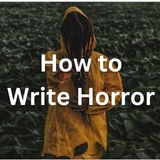Do you NEED a plot template?
by Pramika Kadari
Hi, I'm starting a new book. I've planned out a lot about the main characters, and know the plot I have in mind in pretty good detail. However, I've recently seen one of my writer friends using a "plot template" that maps out when her characters goals, turning points, etc. should be introduced ... she is using this template to help form her plot. I feel like I don't want to follow a template for my plot ... but do you think that following a template will result in a stronger plot?
Answer: Do you "need" a plot template? Well, there are several ways to look at this issue...
What will a plot template do for you? If you have trouble with structure and you're working in a genre where tight plotting matters, then a good template can save you a lot of time spent in trial and error. It can help prevent you from getting stuck or lost in your story and make sure that the plot is dramatically sound.
However, don't let yourself become slave to the template. If using the template produces a plot that you are more excited about, great. If you find it makes the story becomes boring, artificial, cliched, or otherwise not in keeping with your vision of the story you wanted to write, then give yourself the freedom to deviate from it.
Keep in mind too that some genres are much more focused on character, style, or concept than plot (e.g. Literary Fiction, Women's Fiction, Historical), so tight plotting is less important.
Again, if you already have a good outline, you may just want to start writing and turn to a template only if you get stuck.
Something else to remember is that there are a lot of templates out there. Even though most of them describe the same universal pattern to good storytelling, some are a lot more detailed than others.
For instance, the W-plot is the simplest and easiest model to use for almost any story, having only 9 parts.
The monomyth or "hero's journey" is best for telling young adult adventure stories. The basic version has 10 steps, but some story gurus will sell you a version with over 200 steps.
Dramatica is arguably the most complete and open-ended model, and also the most complex (with a steep learning curve).
And there are plenty of others. In fact, many writers create their own model by studying great books in their genre. I cover a few of them at...
https://www.how-to-write-a-book-now.com/story-model.html
But if you are happy with your own process for outlining, I suggest you stick with it until you have finished the first draft. In the revision process, you can look for ways to create a better second draft.
Best of luck.
- Home
- Plot Questions
- Do you NEED a plot template?










